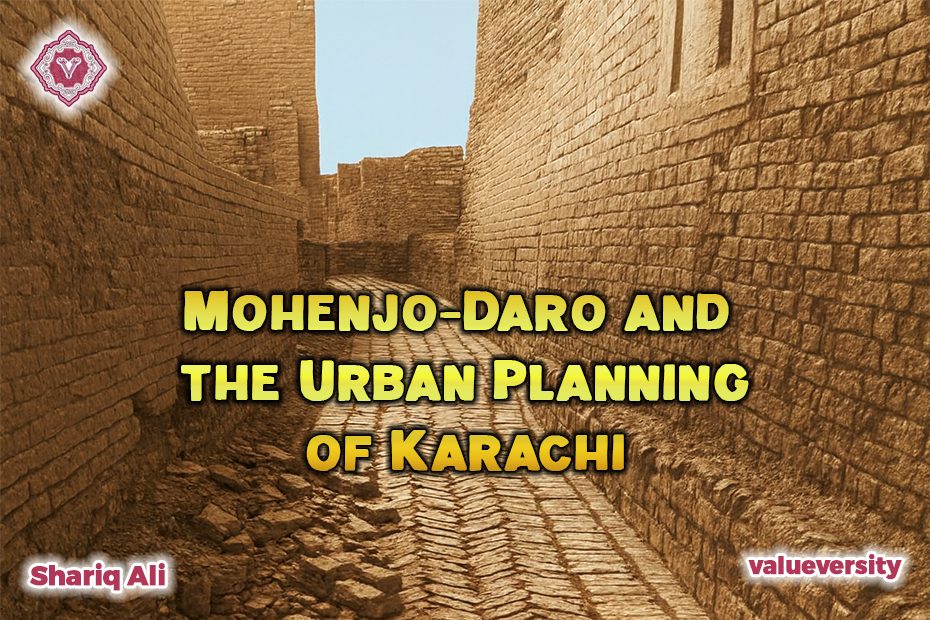Mohenjo-Daro and the Urban Planning of Karachi
By Shariq Ali
Valueversity
Today, when we look at Karachi’s broken roads, garbage-filled drains, and poor planning, the heart grows heavy. What makes it even more astonishing is that all this is happening in the very region where, five thousand years ago, people succeeded in creating one of the most organized systems of urban planning in the world.
While the present-day cities of this region are examples of daily hardship, the civilization of the past tells us how human intelligence, centuries ago, had already created a remarkable blend of cleanliness, order, and civic amenities.
Mohenjo-Daro, the great settlement of the Indus Valley, was at its peak around 2500 BCE. A standard brick ratio of 1:2:4 was used consistently throughout the city. The streets were straight, designed on a grid plan, with a well-organized drainage system spread across. An important aspect of the city’s structure was its division into two parts: the upper area of the citadel or temples, and the lower residential quarters for common citizens. This clearly shows that planning came first, and settlement followed. It was not just construction but evidence of civic consciousness and collective welfare.
Every third house had a well, with more than seven hundred wells dug across the city. Houses had bathing platforms and toilets connected through drains to central sewers. The Great Bath, waterproofed with gypsum and natural bitumen, was used for collective cleanliness and perhaps religious rituals.
In the marketplaces, seals were widely used for identifying goods and maintaining records. Cotton fibers and fabrics—considered the earliest examples in the world—have been found here. Trade extended as far as Mesopotamia, where they were known as “Meluhha.” Interestingly, the absence of grand palaces or huge temples suggests a relatively egalitarian social structure.
Thus, amid today’s urban chaos, Mohenjo-Daro reminds us that true progress lies not in modern technology, resources, and brick-and-concrete alone, but in sincerity, honesty, foresight, cleanliness, and collective welfare.
